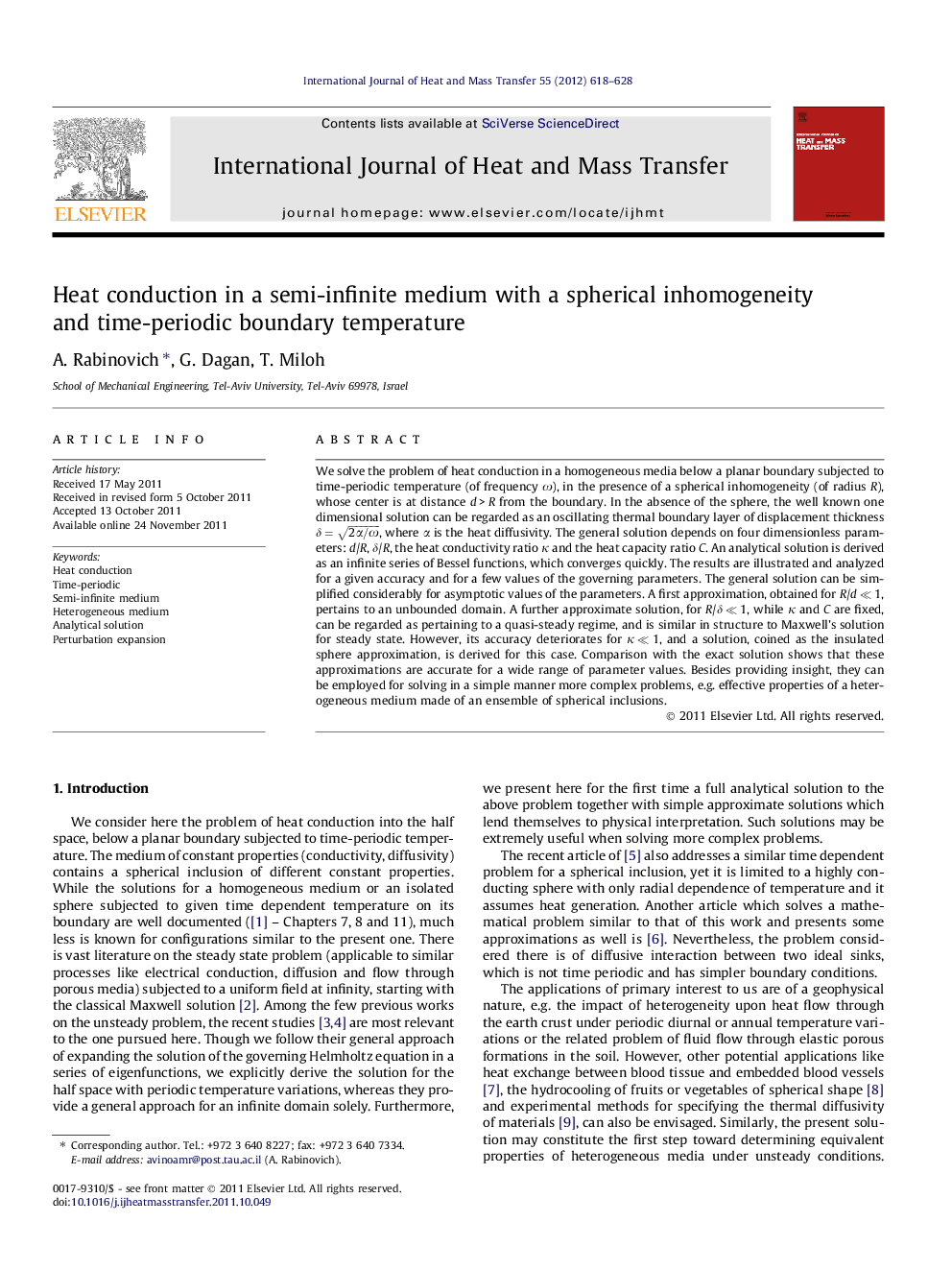| Article ID | Journal | Published Year | Pages | File Type |
|---|---|---|---|---|
| 658954 | International Journal of Heat and Mass Transfer | 2012 | 11 Pages |
We solve the problem of heat conduction in a homogeneous media below a planar boundary subjected to time-periodic temperature (of frequency ω), in the presence of a spherical inhomogeneity (of radius R), whose center is at distance d > R from the boundary. In the absence of the sphere, the well known one dimensional solution can be regarded as an oscillating thermal boundary layer of displacement thickness δ=2α/ω, where α is the heat diffusivity. The general solution depends on four dimensionless parameters: d/R, δ/R, the heat conductivity ratio κ and the heat capacity ratio C. An analytical solution is derived as an infinite series of Bessel functions, which converges quickly. The results are illustrated and analyzed for a given accuracy and for a few values of the governing parameters. The general solution can be simplified considerably for asymptotic values of the parameters. A first approximation, obtained for R/d ≪ 1, pertains to an unbounded domain. A further approximate solution, for R/δ ≪ 1, while κ and C are fixed, can be regarded as pertaining to a quasi-steady regime, and is similar in structure to Maxwell’s solution for steady state. However, its accuracy deteriorates for κ ≪ 1, and a solution, coined as the insulated sphere approximation, is derived for this case. Comparison with the exact solution shows that these approximations are accurate for a wide range of parameter values. Besides providing insight, they can be employed for solving in a simple manner more complex problems, e.g. effective properties of a heterogeneous medium made of an ensemble of spherical inclusions.
